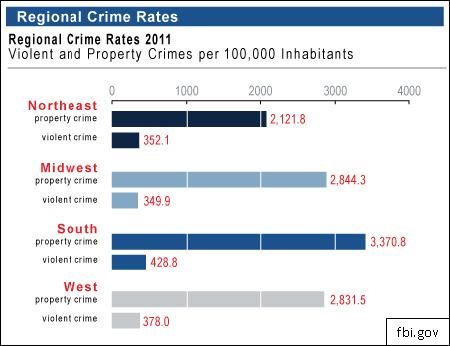
Crime Statistics in 2011 in the United States
Crime statistics are an important tool for understanding the nature and extent of crime in the United States. In this article, we will take a closer look at the crime statistics for 2011, including the types of crimes committed, the demographics of offenders and victims, and the geographic distribution of crime.
Types of Crimes Committed
In 2011, violent crime in the United States decreased by 3.8% compared to the previous year. However, property crime increased by 0.5% over the same period. The most common types of crimes committed in 2011 were:
– Property crimes: These crimes include burglary, larceny, and motor vehicle theft.
– Violent crimes: These crimes include murder, rape, assault, and robbery.
– Drug-related crimes: These crimes include drug possession and drug trafficking.
Demographics of Offenders and Victims
The demographics of offenders and victims vary depending on the type of crime committed. In 2011, the following trends were observed:
– Property crimes: Young males between the ages of 15 and 25 were the most likely to commit property crimes. Victims of property crimes tended to be older males over the age of 40.
– Violent crimes: Young males were also the most likely to commit violent crimes, with the highest rates of offending occurring among those aged 18-24. Victims of violent crimes were more likely to be male than female, and tended to be younger than the offenders.
– Drug-related crimes: The majority of drug-related offenders were male, with the highest rates of drug use occurring among those aged 18-25.
Geographic Distribution of Crime
The geographic distribution of crime in the United States varies depending on the type of crime committed. Urban areas tend to have higher rates of violent crime, while rural areas tend to have higher rates of property crime. In 2011, the following trends were observed:
– Property crimes: The highest rates of property crime occurred in urban areas, with burglary rates highest in suburban areas.
– Violent crimes: The highest rates of violent crime occurred in urban areas, with murder rates highest in large cities.
– Drug-related crimes: Drug-related offenses were distributed evenly across urban, suburban, and rural areas.
Conclusion
The crime statistics for 2011 provide important insights into the nature and extent of crime in the United States. Despite decreases in violent crime, property crime continued to be a challenge. The demographics of offenders and victims varied depending on the type of crime committed, highlighting the need for targeted interventions. Finally, the geographic distribution of crime indicates that different types of crime require different prevention and response strategies based on local conditions.
The Federal Bureau of Investigation released the new 2011 crime statistics at the end of October this year, and the statistics show a general decline in most violent crimes in various parts of the United States. Violent and property crimes decreased by roughly 3.8 percent and 0.5 percent compared to the statistics in 2010. Violent crimes dropped for the fifth year straight, while property crimes dropped for the ninth consecutive year.
The South had the most violent crimes in the nation (41.3 percent), while lesser amounts of crime occurred in the Western states (22.9 percent), Midwestern states (19.5 percent), and the Northeast states (16.2 percent).
Aggravated assaults were the most common violent crime and accounted for 62.4 percent of all violent crimes. Larceny-theft made up 68 percent of all property crimes.
The statistics were collected from law enforcement agencies part of the FBI’s Uniform Crime Reporting (UCR) program. The violent crimes that participating agencies reported include murder, non-negligent manslaughter, forcible rape, robbery, and aggravated assault. The property crimes include burglary, larceny-theft, motor vehicle theft, and arson. A total of 18,233 agencies participated in the 2011 UCR Program.
Summary of Statistics from Crime in the United States, 2011:
• a total of 1,203,564 violent crimes were reported in 2011
• a total of 9,063,173 property crimes were reported
• robbery decreased 4.0 percent; aggravated assault 3.9 percent; forcible rape 2.5 percent; and murder and non-negligent manslaughter 0.7 percent
• the arrest rate for violent crimes was 172.3 per 100,000 people
• the arrest rate for property crimes was 531.3 per 100,000 people
• fire arms were used in 67.8 percent of murders, 41.3 percent of robberies, and 21.2 percent of aggravated assaults
• reporting agencies employed 698,460 officers and 303,524 civilians
Sources: Federal Bureau of Investigation


























